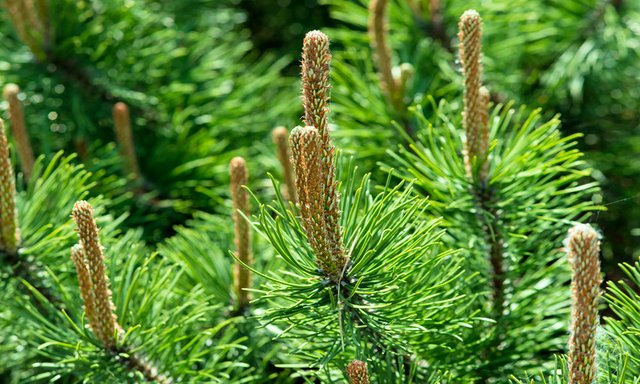
Why and how do pine buds affect our health?
Pine is one of the most recognizable trees. Pine trees are the pride of our gardens and parks.
Due to their medicinal properties, pine trees have been known for hundreds of years.
There is a lot of ancient information describing the different properties of pine.
Some can be treated as fairy tales, but others are still valid today.
What do pine trees they contain?
Pine buds are the herbal raw material that we collect and use. Young pine buds, pine bark, pine oil, turpentine oil, rosin, pine tar are also used in medicine.
Pine buds have up to 0.4% oil containing alpha- and beta-pinene, limonene and borneol, diterpene resin acids, flavonoids, bitter compounds, wax substances, vitamin C, sugars, and mineral salts.
Young pine buds are best known for their expectorant properties.
They are used for syrups, tinctures, and infusions.
It is mainly syrup that has a very strong expectorant effect. It is given to both children and adults in the case of upper respiratory tract infections.
How does this happen?
They dilute the secretion in the respiratory tract, which facilitates expectoration. In addition, it dries the bronchi and acts diaphoretic.
These are the most significant properties, but also those less known are diuretic, antibacterial, or choleretic.
Since we have easy access to pine, collecting its buds and young shoots, should not pose a problem. Pine buds are mainly harvested from fallen or cut trees.
They are collected in early spring before they begin to crack when they have adherent scales and are covered with resin. The most valuable are the buds of young trees.
We can use them freshly picked or dry them, and then store them in a glass, well-closed jar. After drying, they should be smooth, resin-coated, yellow-brown in color, resin scent, and bitter taste.
From young shoots of pine, extracts are also prepared: both alcoholic and aqueous.
However, the former has a stronger effect, because not all plant compounds dissolve in water.
So if you want to prepare water extracts, you should sprinkle pine buds with alcohol before starting them. Let’s not be afraid, the alcohol will evaporate anyway because we pour the boiling water over the buds, and the compounds, most useful for us, will stay in the extract.
Here are a few great recipes
A tincture made of pine buds.
Pour a small amount of spirit over about 100 gr of crushed fresh or dried pine buds. Then heat slightly 4% alcohol in the amount up to 500 g max. Close it in a glass jar and store in a dark place for about 7 days.
- Infusion of pine buds.
Use, about 3 grams of crushed pine buds, before pouring boiling water sprinkle with spirit, then pour boiling water. Cover them and brew undercover for 10 minutes. Then, strain and, if possible, drink a hot brew quickly to absorb as many compounds as possible because for example oils together with the water vapor, evaporate very quickly. This infusion is very helpful in the treatment of upper respiratory tract infections. It can be made and drunk up to 3 times a day.
We use it in an amount of 1/2 teaspoon, several times a day in catarrh and inflammation of the upper respiratory tract such as colds, pharyngitis, coughing, and bronchitis.
The tincture, prepared in this way, can also be used to lubricate all types of skin lesions such as acne, ringworm, impetigo, seborrheic dermatitis, as well as with slight muscle pain and neuralgia in the form of compresses.
- Pine buds syrup.
For this purpose, we prepare about 60 gr of fresh, crushed pine buds. Then sprinkle them with a small amount of spirit and fill with sugar in an amount of about 50 grams (preferably cane, unrefined). After about 1 hour, mix the preparation with 1 liter of boiling water, add about 30 grams of sugar and boil everything together.
It is a better alternative for children. Take this syrup several times a day, 1 tablespoon.
However, you must store it in the fridge.
The syrup is used in inflammation of the mouth, bronchi, throat, and larynx, combined with coughing and difficult expectoration.
Read more at healthyasabirch.com